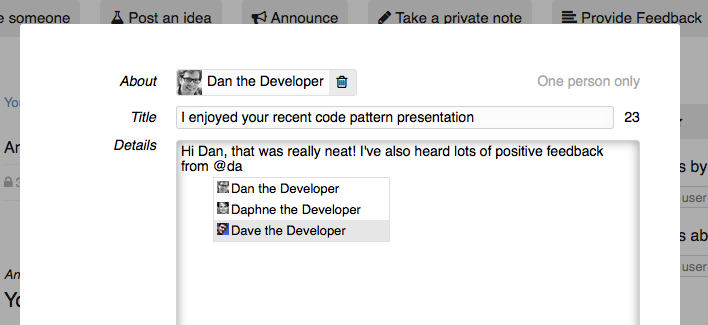The power of peer feedback is often overlooked, with many ignoring it’s impact on overall learning and achievement. Peer feedback can ultimately reduce the gap between an employee’s current performance and direct how to correct, learn, or make necessary improvements and adjustments.
But knowing the value of feedback is one thing, but fostering a culture that encourages it is another. To build a successful feedback culture, leaders should develop best practices to encourage ongoing learning and involvement.
While we always appreciate feedback from higher-ups, feedback from our peers can be just as impactful (if not more!). So, what are some best practices to remember when receiving feedback from peers?
7 best practices for giving peer feedback
1) Choose the right communication channels.
Consider where or how the feedback is delivered–email, in-person, or Slack? Will the setting foster respect and engagement? Public forums for posting praise can be motivating. Still, when feedback is negative, it is also crucial that it is delivered respectfully and with the possibility of giving a response.
2) Teach teams how to give feedback.
Knowing how to give and receive feedback is a skill. Some might be better than others, but skills can be improved with regular practice. Companies can encourage a culture of feedback by training their employees on the art of feedback. Negative or positive, feedback should be clear, specific, and offer solutions or clear guidance on how improvements can be made.
3) Keep feedback goal-oriented.
Effective feedback aligns with the goals of the individual, team, or organization. These objectives should be made clear and considered by employees before they give feedback to peers.
4) Offer transparent feedback.
Feedback should have a clear intention, with tangible and actionable guidance for improvements. The receiver should not have to wonder what it is about or what they should do to get better results
5) Give on-point and on-time feedback.
Feedback should be precise and timely. It wouldn’t be productive or helpful to give feedback weeks or months down the line—so set deadlines to review specific tasks or work products.
6) Maintain consistency.
A one-off peer review, negative or positive, just isn’t going to be sustained or helpful. Consistency will encourage reliability, accuracy, and trustworthiness, so make sure that peer review is established regularly.
7) Establish detailed feedback criteria.
To ensure consistency, you can create a set of criteria the feedback should follow. This establishes a guideline for what should be included, such as:
- Content of feedback
- Areas of improvements
- Specific next steps
A little help goes a long way
Having best practices for peer feedback will ensure that the process is consistent and effective. To get things started, get your managers and organizational leaders on board—you’ll need their help to promote the importance of peer feedback and create processes that follow best practices.
To help you consolidate frequent feedback in your org, use Anytime Feedback. Available within the Small Improvements tool, Anytime Feedback helps you deliver feedback more frequently and with fewer formalities.
Time and consistency are of the essence in constructive feedback. Using Anytime Feedback can ensure the feedback itself is precise, reliable, and productive.



